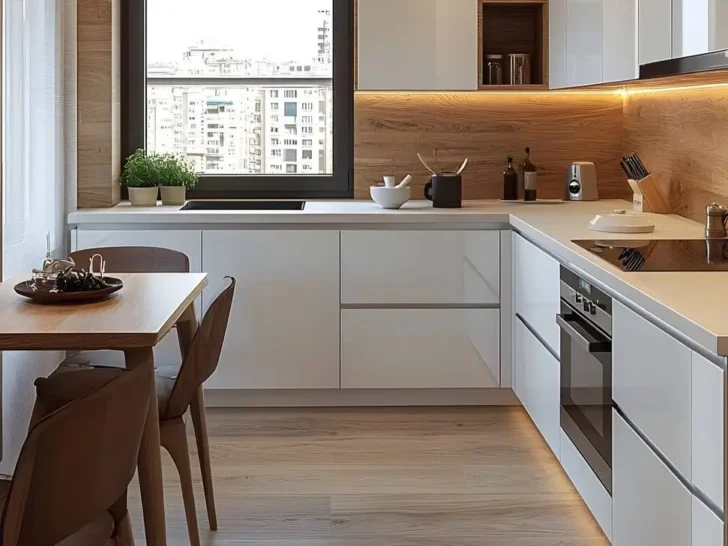The kitchen, the heart of the home, is where we nourish ourselves and connect. If a contemporary yet inviting space appeals, explore the organic modern style. It elegantly blends clean, modern lines with the warmth of natural elements. Imagine sleek cabinetry alongside rustic wood accents. Picture crisp, white countertops contrasted with textured stone.
Envision a space filled with light, natural materials, creating a calm retreat. Organic modern kitchens prioritize sustainability and connection to the outdoors, all while maintaining sophisticated simplicity. This article provides inspiring ideas and practical tips to transform your kitchen.
Explore material choices, color palettes, and key design principles to bring this serene and stylish vision to life. From flooring to finishing touches, discover how to create a timeless and welcoming kitchen.
1/30. Incorporating Greenery

Bring the outdoors in. Introduce plants to add life and vibrancy. Potted herbs, trailing vines, or larger leafy plants soften the clean lines. Plants enhance the connection to nature, improving well-being, and air quality.
2/30. Natural Materials

The beauty of nature should be embraced in the kitchen. Materials like wood for countertops and shelving, and stone for backsplashes can be integrated. Notice the unique textures. These elements create a stylish, inviting atmosphere.
3/30. Neutral Color Palette

A calming and inviting kitchen starts with the right colors. Warm whites, soft greys, and gentle beige tones are a great foundation. These colors create a sense of serenity, making the space feel visually expansive and timeless.
4/30. Abundant Natural Light
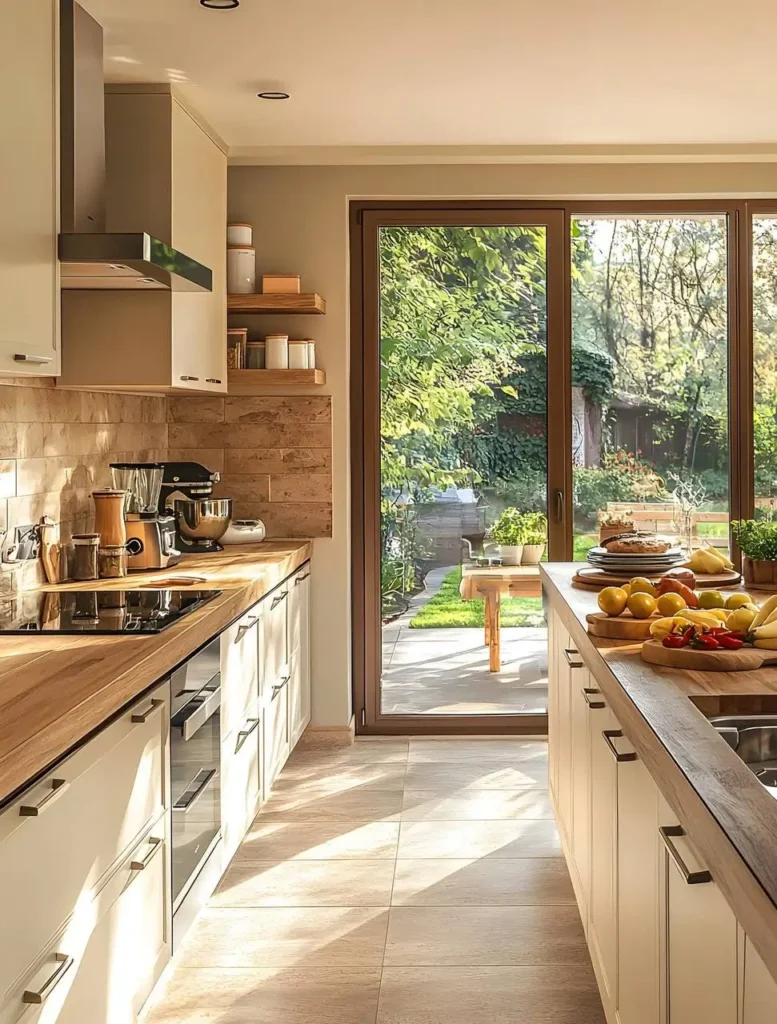
Bringing the outdoors in is easily achieved. Windows and, if possible, skylights should be maximized. Natural light brightens the space, highlighting textures and creating a welcoming, airy atmosphere for everyone to enjoy.
5/30. Clean Lines and Minimalist Silhouettes
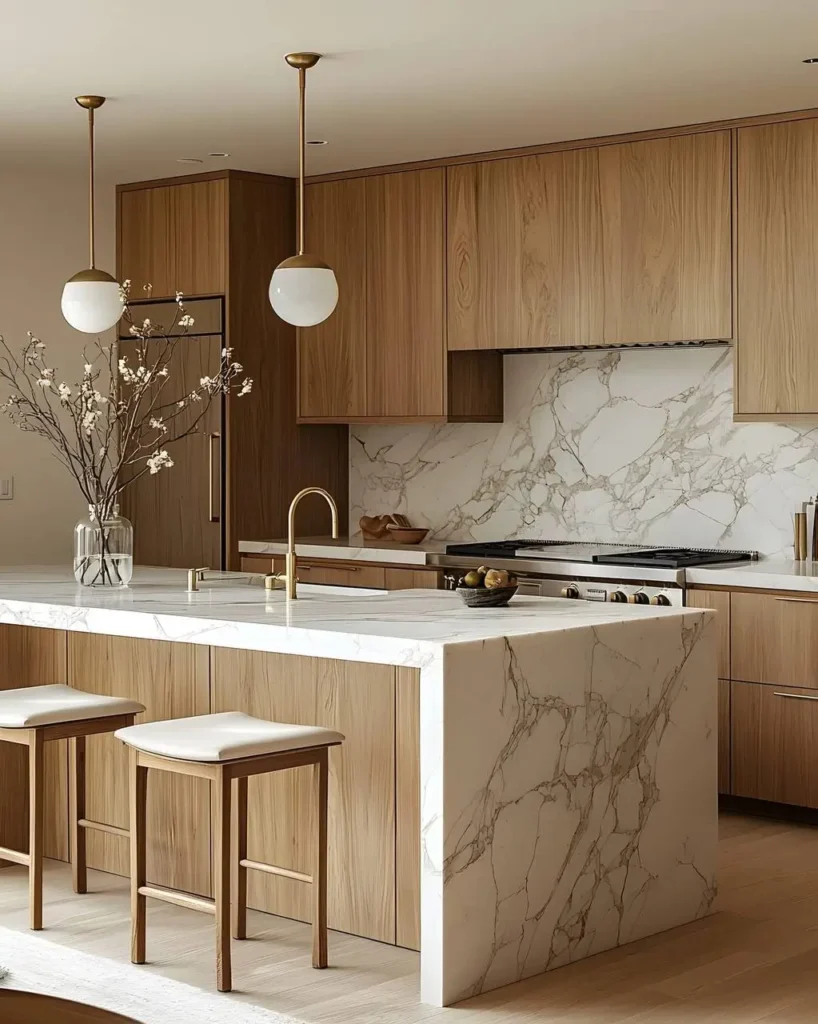
Simplicity and streamlined design are key. Cabinetry, countertops, and fixtures should feature clean lines and minimal ornamentation. This creates a sense of spaciousness and calm, shifting the focus to the organic materials.
6/30. The Importance of Texture
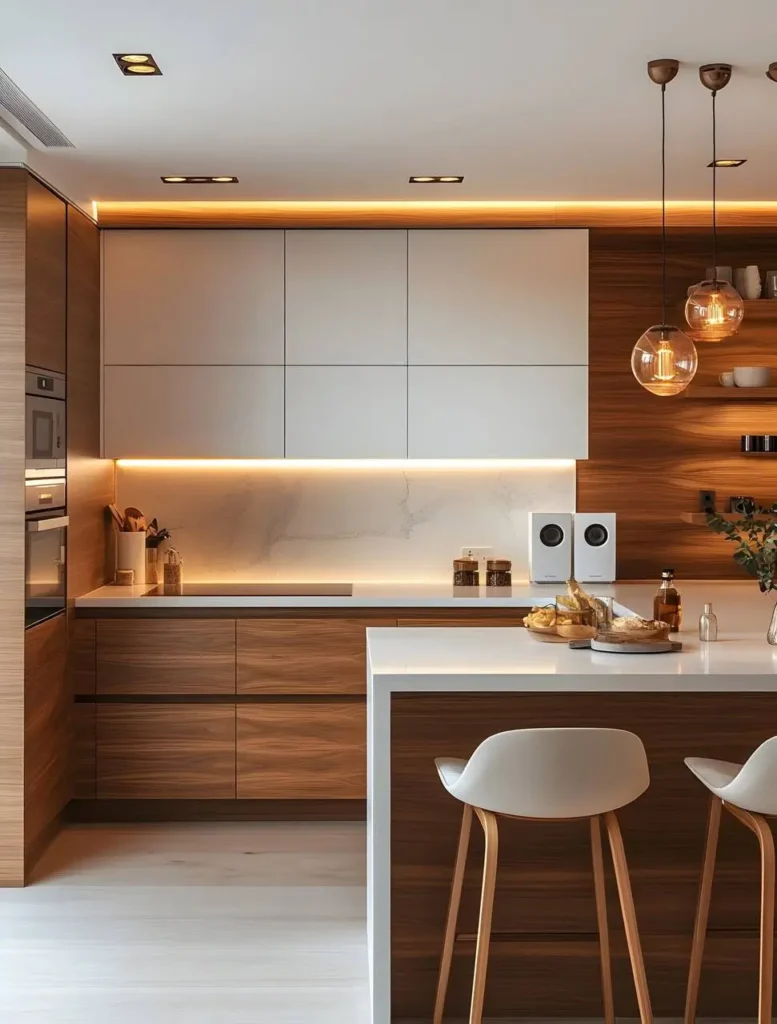
Visual depth is created through contrast. Smooth with rough, and matte with glossy can be combined for added interest and dimension. A smooth countertop, a wood-paneled wall, and unique, handcrafted light fixtures, as shown here, are excellent considerations.
7/30. Lighting Your Organic Modern Kitchen
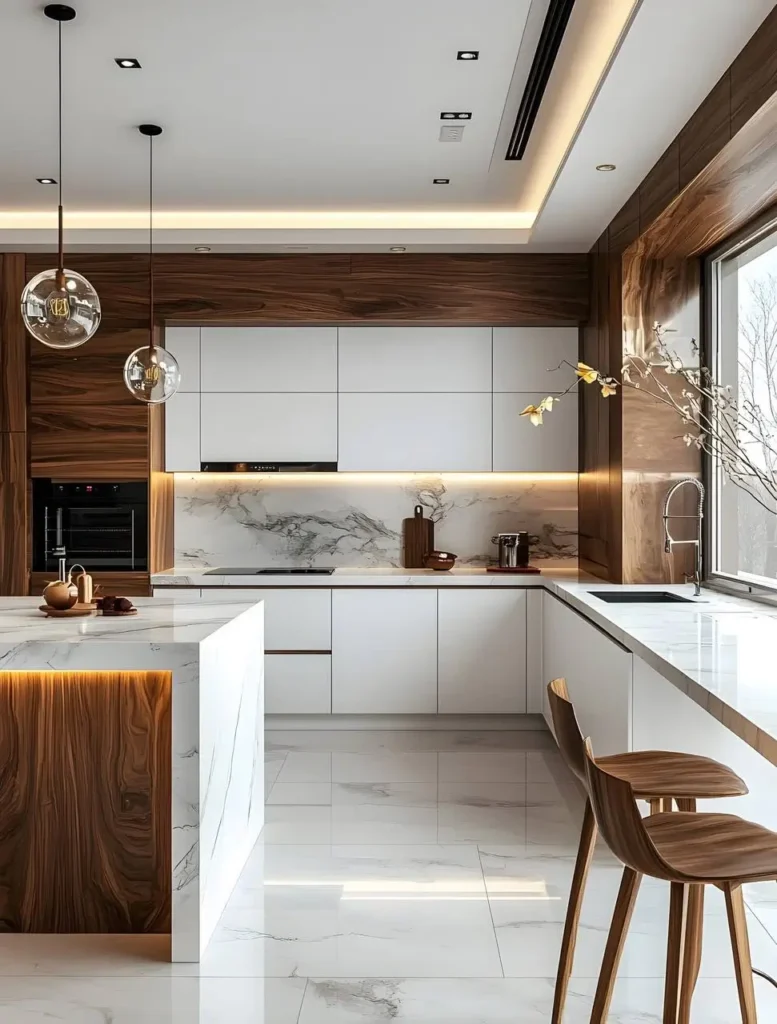
Create a multi-dimensional ambiance through layered lighting. It combines ambient, task, and accent. Achieve a balance that is both functional and aesthetically pleasing, highlighting the various textures. Pendants, and under-cabinet lights are great to feature.
8/30. Cabinetry Choices
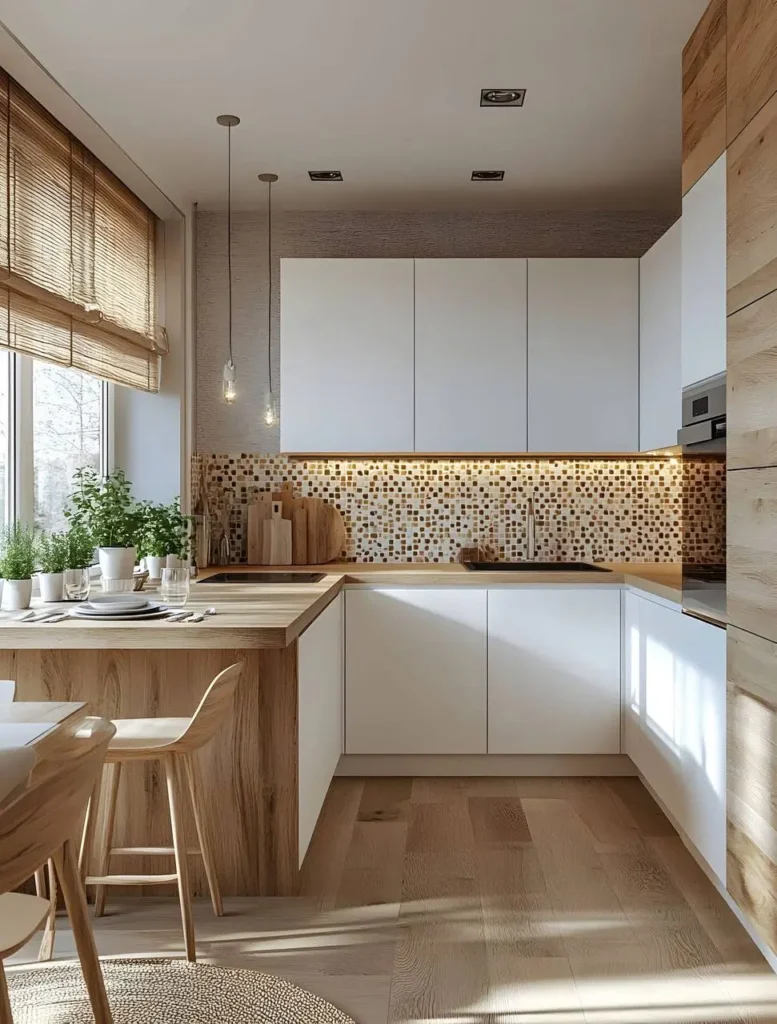
The minimalist aesthetic should be reflected in your cabinetry. Slab doors with natural wood finishes or a calming neutral color are good options. The streamlined look and organic appeal are enhanced by integrated handles or simple, understated hardware.
9/30. Flooring Options

The natural aesthetic should be complemented by your flooring. Wide plank wood, concrete, or large-format tiles in natural stone colors are good options. These choices create a cohesive and visually expansive foundation, enhancing the organic feel.
10/30. Hardware and Fixtures
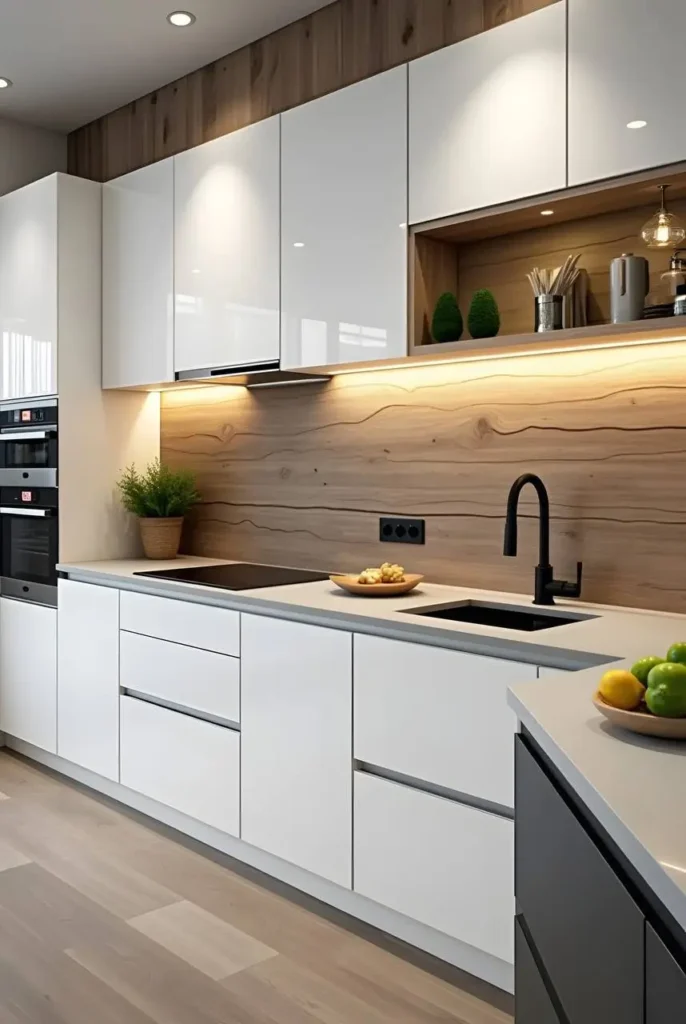
Hardware and fixtures should complement the minimalist design. Matte black, brushed brass, or finishes that blend seamlessly with the cabinetry are excellent options. Prioritize clean lines and simple forms, avoiding overly ornate designs.
11/30. Countertop Considerations
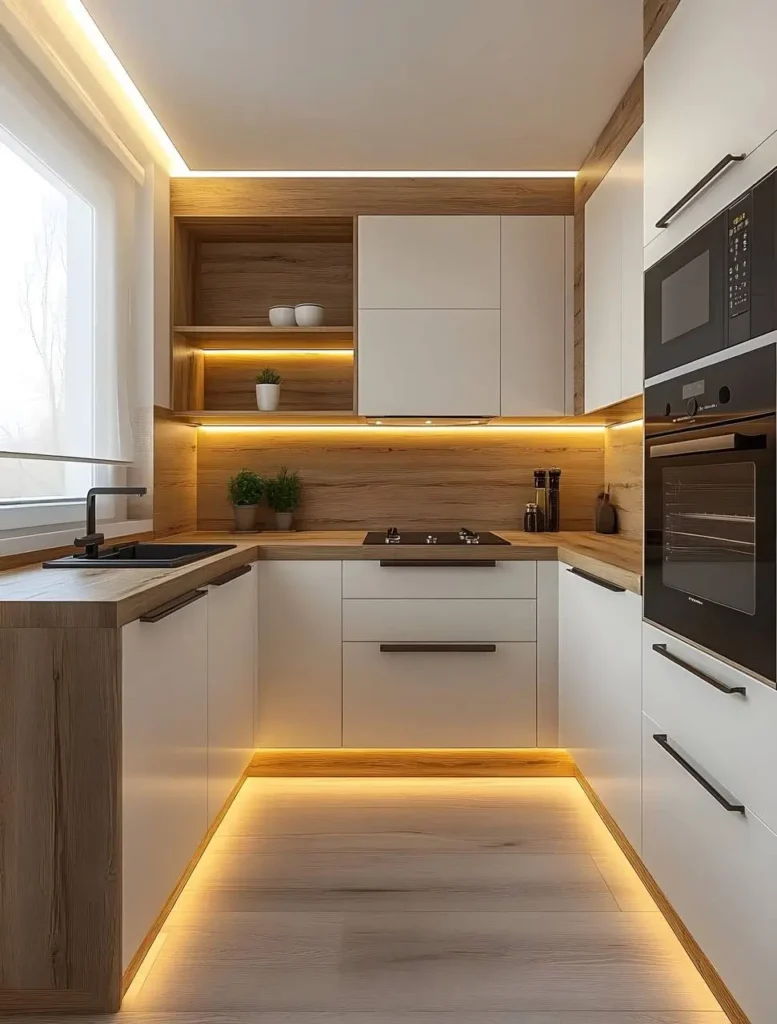
Balance aesthetics and durability. Quartz, concrete, and butcher block are excellent options. These materials offer a range of colors and textures. It complements the organic modern style, providing both beauty and function to the kitchen.
12/30. Backsplash Inspiration
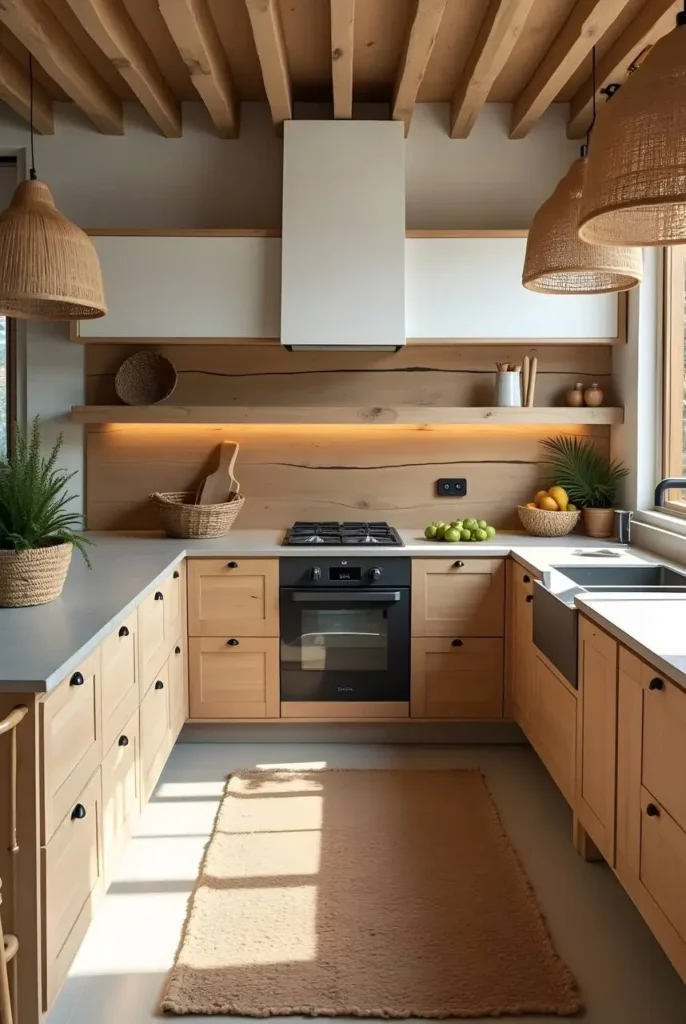
Texture and visual interest can be added through backsplash choices. Natural stone, textured tiles, or even a simple continuation of the countertop material work well. A cohesive look is created this way. Enhance the organic aesthetic by keeping the color palette understated.
13/30. Open Shelving vs. Closed Cabinetry
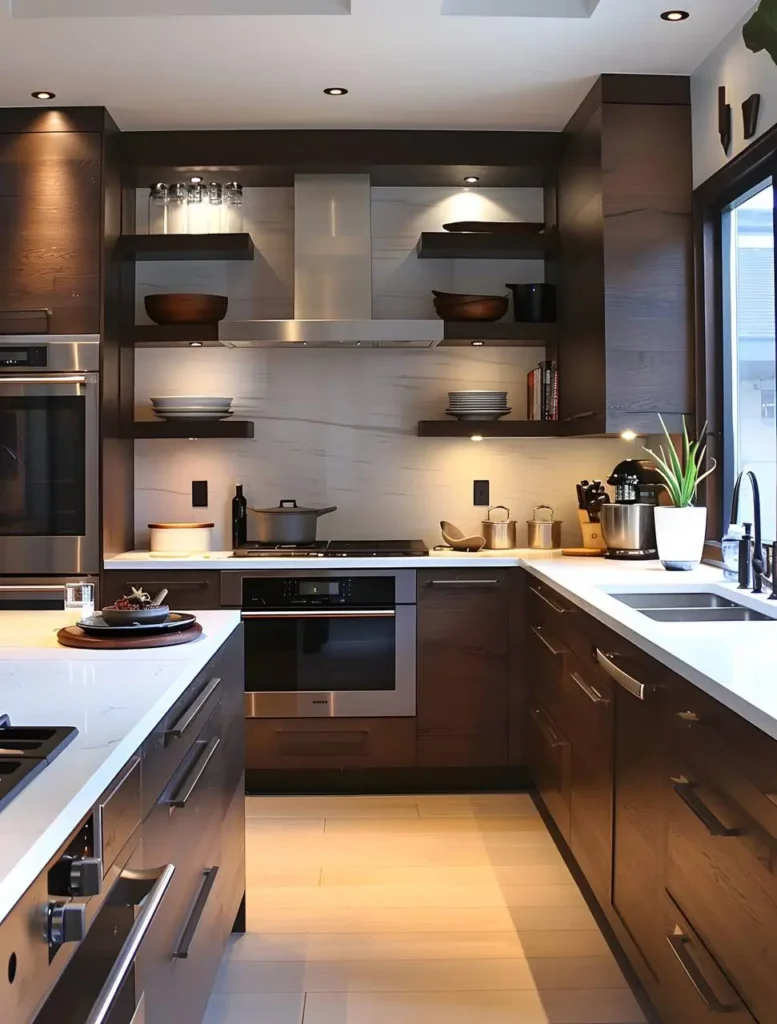
A mix of open shelving and closed cabinetry offers the best of both worlds. Open shelves can display curated items and add an airy feel, while closed cabinets maintain a clutter-free look.
14/30. Textiles and Accessories
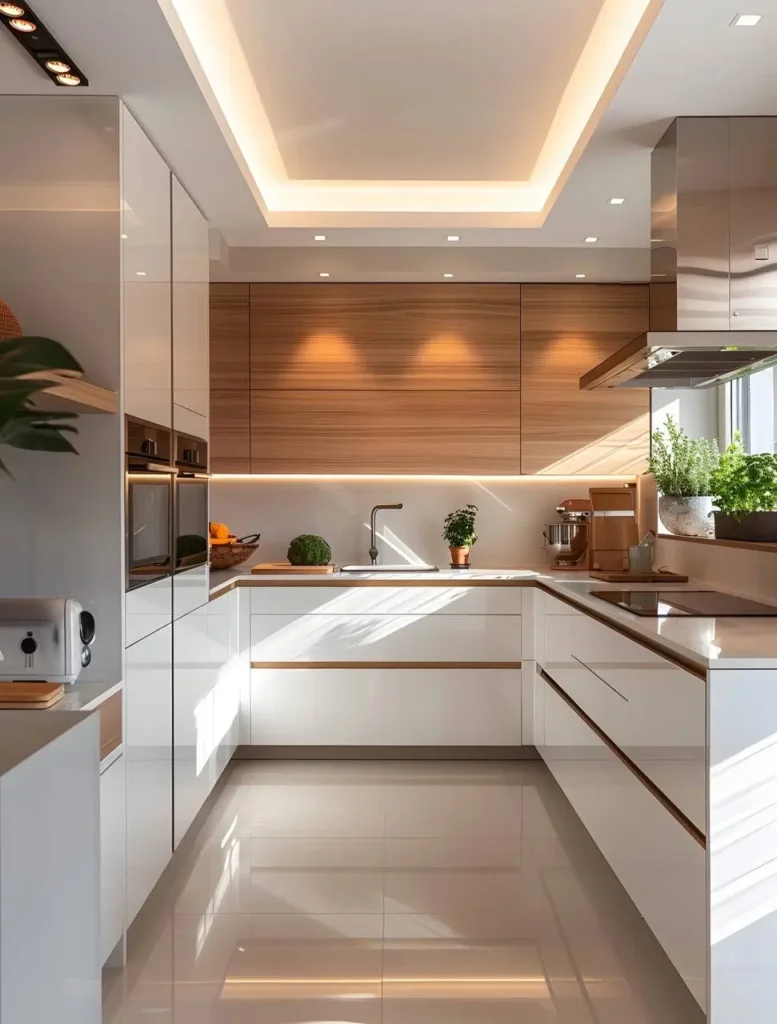
Softness and warmth can be introduced with textiles. Woven baskets, linen towels, ceramic dishware, and wooden bowls are great additions. These elements complement the natural materials, creating a welcoming and inviting atmosphere in the kitchen.
15/30. Functionality First
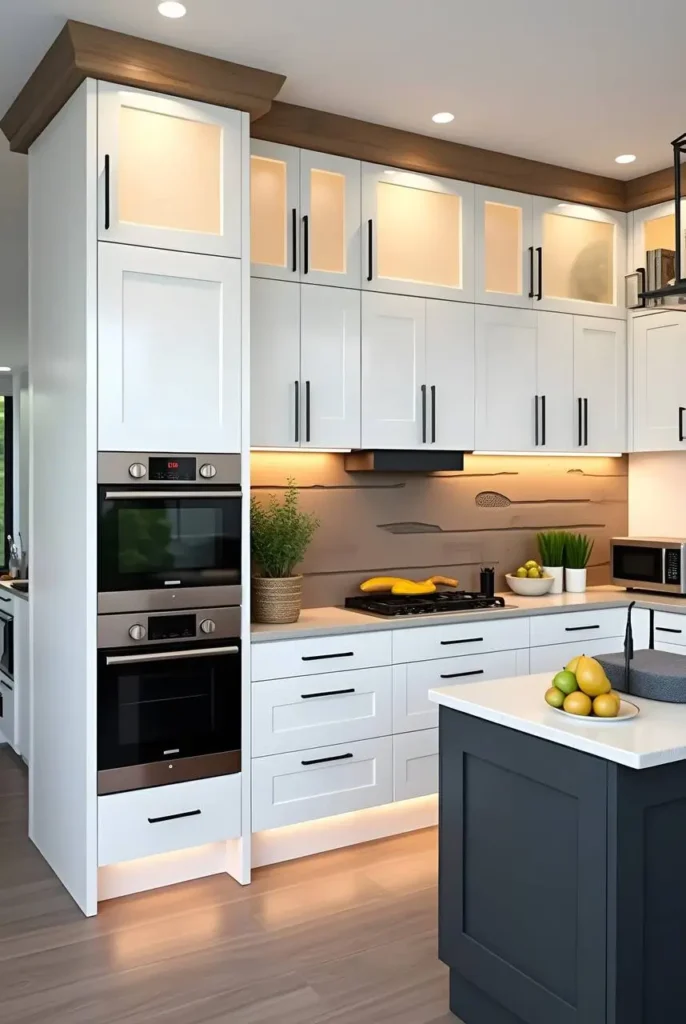
A user-friendly layout should be prioritized. Workflow needs consideration, and ample counter space and storage should be ensured. A well-designed kitchen should be both beautiful and practical, making everyday tasks enjoyable, efficient, and seamless for everyone.
16/30. Balance and Harmony
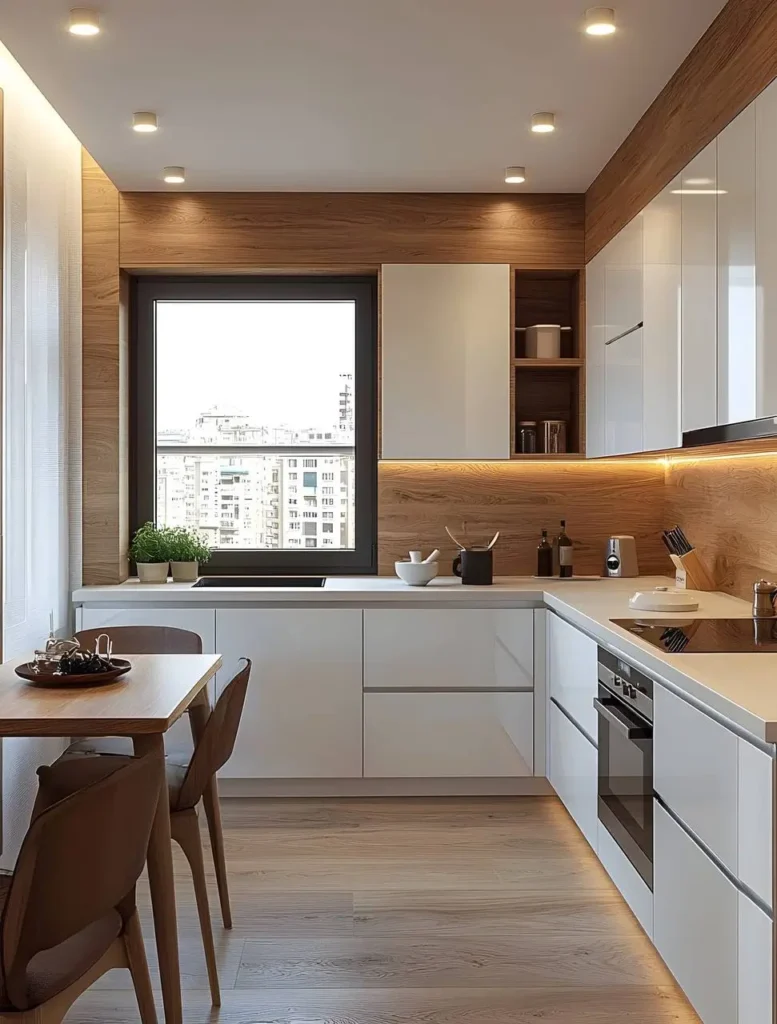
A cohesive and visually appealing space requires balance. The various elements: natural materials, neutral colors, and clean lines need to be balanced. Ensure that no single element overpowers another, achieving an integrated and peaceful room.
17/30. Sustainability in Focus
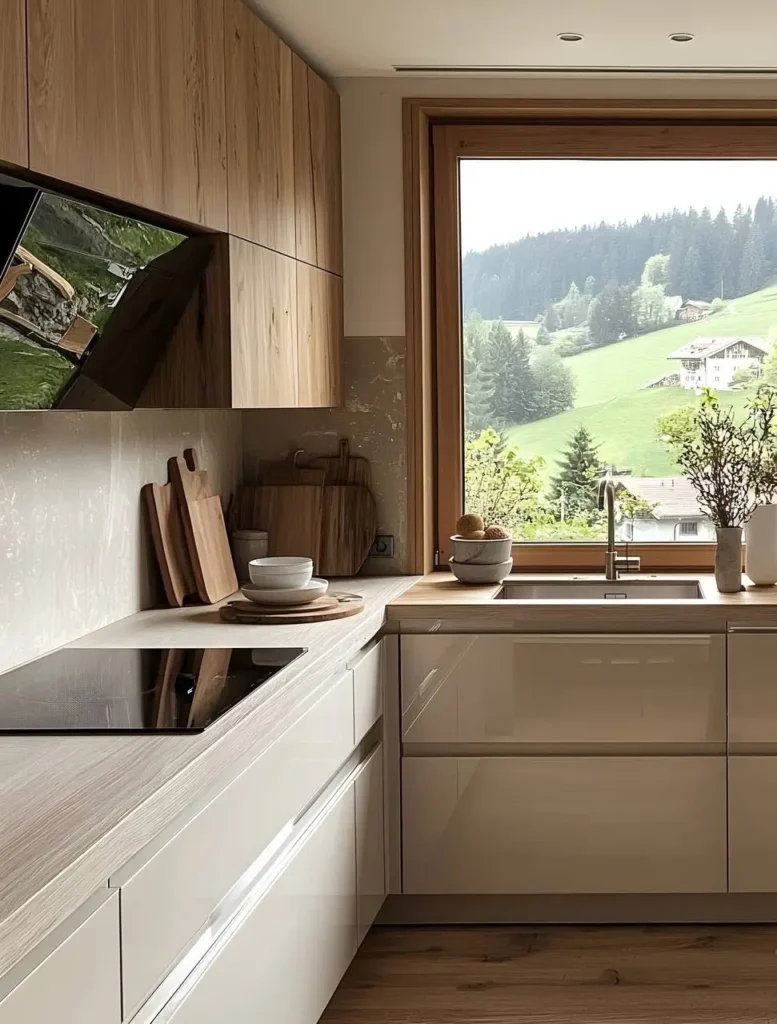
Eco-conscious choices should be made whenever possible. Sustainable materials, energy-efficient appliances, and water-saving fixtures are important considerations. This not only benefits the environment but it creates a healthier and mindful home that will last.
18/30. Less is More
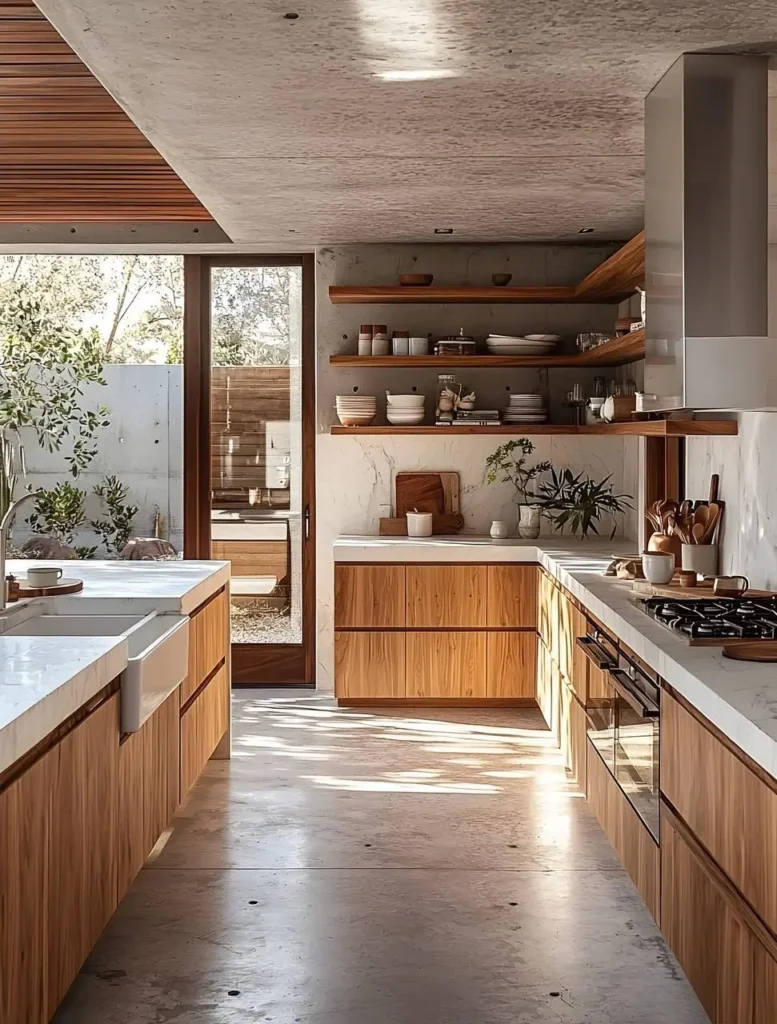
The minimalist principle should be embraced. Clutter and unnecessary ornamentation should be avoided. A few carefully chosen pieces will have a greater impact, creating a calm and uncluttered space that feels both stylish and serene.
19/30. Personal Touches
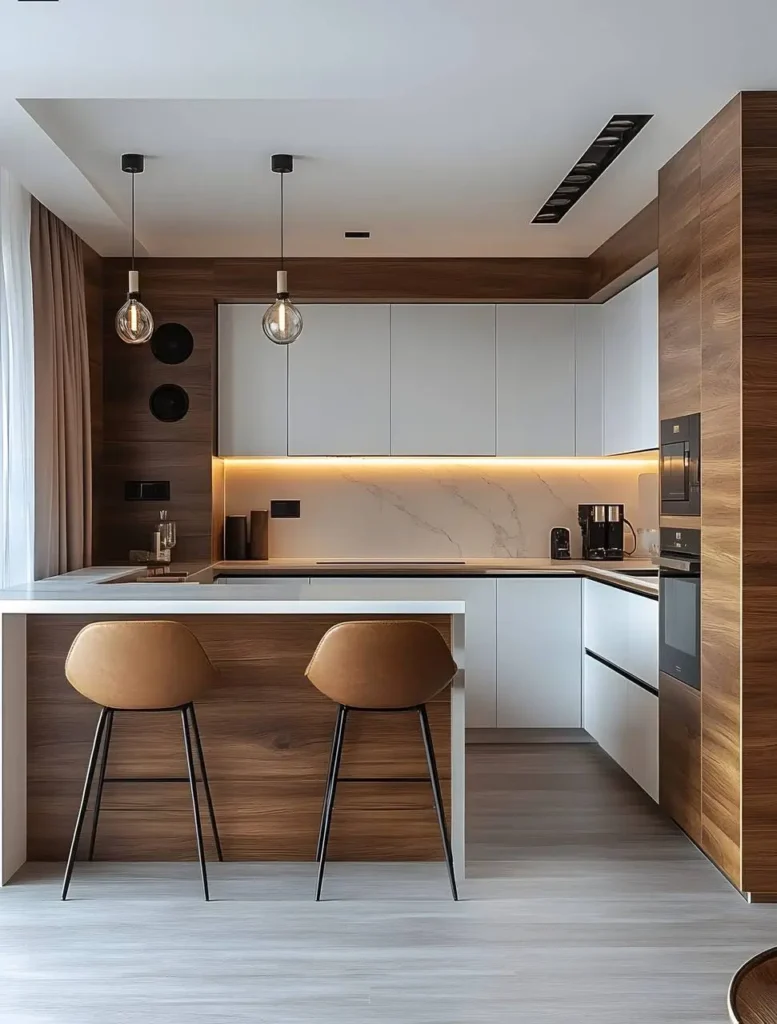
Items that hold meaning can help infuse your personality. Artwork, handcrafted ceramics, or collected treasures could be displayed. This adds warmth and makes the kitchen uniquely yours, giving the room its soul.
20/30. A Focus on Finishes

Careful consideration should be given to the different finishes. Matte finishes on the cabinets can help to reduce glare. Mixing finishes, such as using a matte finish and polished, works well.
21/30. Skylights and Windows
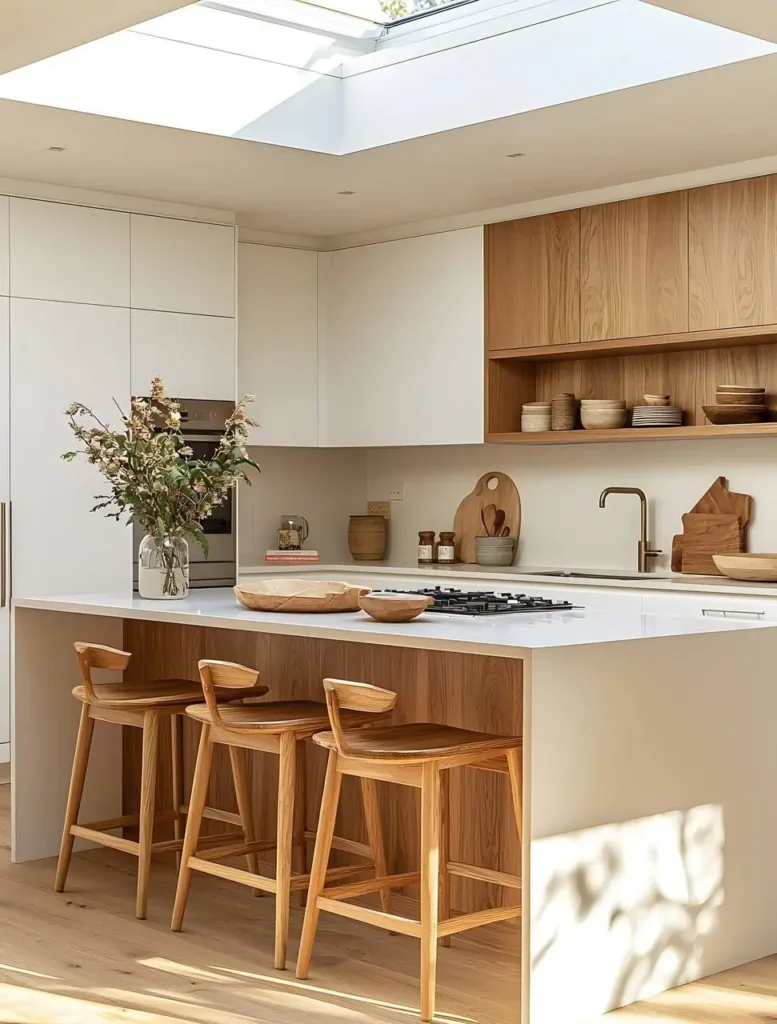
Enhance your kitchen’s natural light. Strategically placed skylights and large windows. Maximize brightness. This creates a connection to the outdoors. Natural light enhances the organic materials.
22/30. Storage Solutions
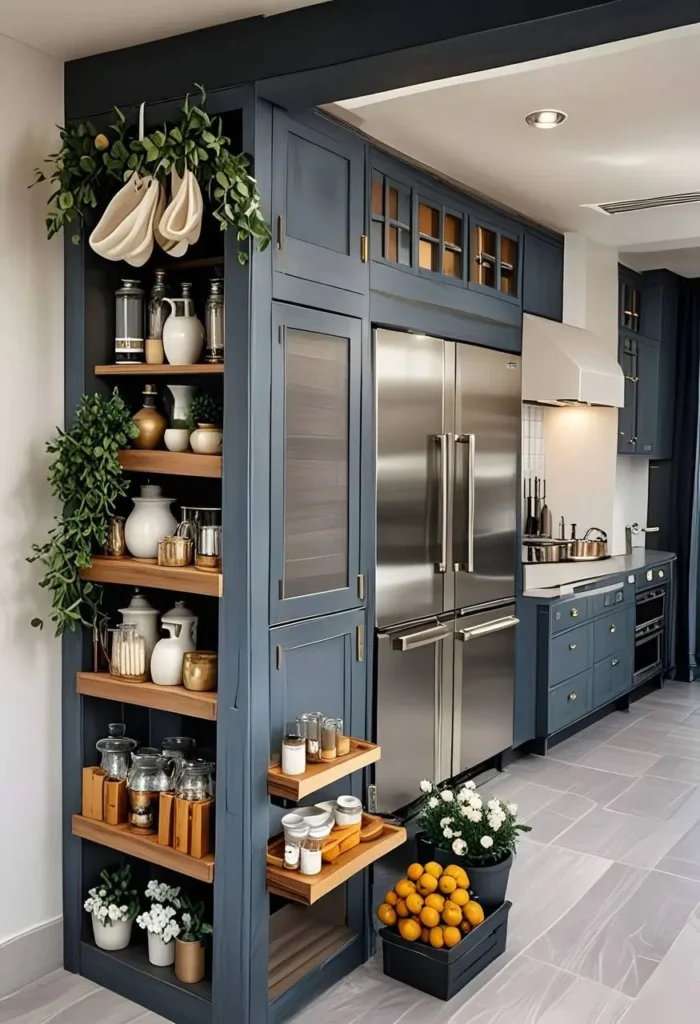
Storage should be maximized. Pull-out shelves, drawer dividers, and tall pantries can be incorporated. Keeping the countertops clear, contributing to the overall minimalist aesthetic.
23/30. Layered Lighting Effects

Depth and visual interest is easily achieved. A variety of lighting sources is key. Ambient, task and accent lighting combine. Under-cabinet lights and toekick lights are excellent options.
24/30. Mixing Materials

Create visual depth through varied textures in your organic modern kitchen. Use a mix of materials. Woven, wood, matte, and stone elements combine to enhance a dynamic and inviting kitchen.
25/30. Durable Countertops
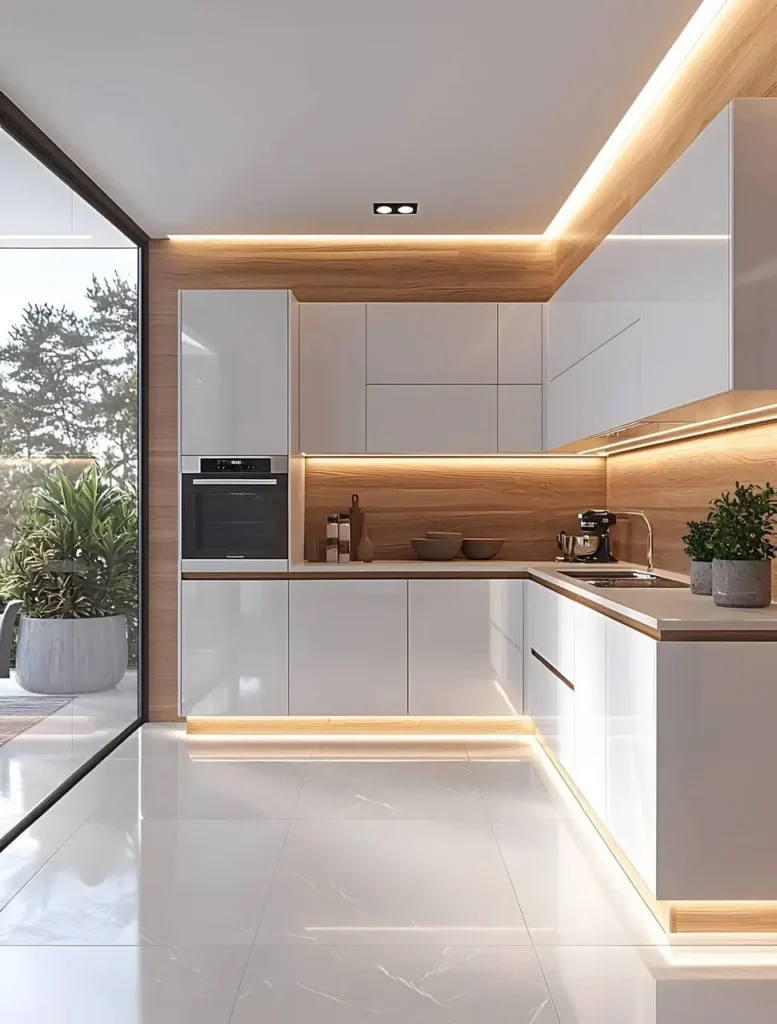
Functionality should be considered when choosing countertop options. Quartz and concrete are both durable and beautiful, resisting staining and scratching. They provide a balance of elegance and practicality for a working organic modern kitchen.
26/30. Earthy Tones

Create a calming kitchen environment, starting with the colours. Use a palette of warm whites, soft greys, and beiges. Accents in muted greens, terracottas, or blues can enhance the organic aesthetic.
27/30. Mixing Storage Solutions
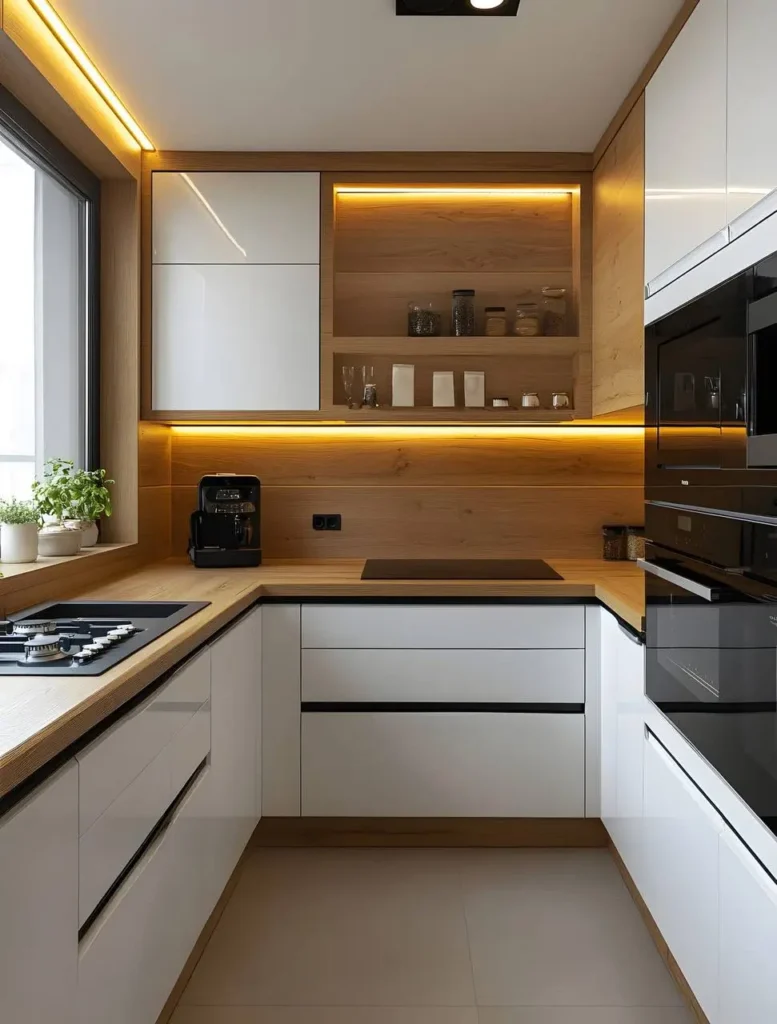
Personality can be added by open shelving to display curated items. A clutter-free look is maintained with closed cabinetry. This combination provides both aesthetic appeal and practical storage, optimizing kitchen functionality and flow.
28/30. Wood and Stone

Use the beauty of natural elements throughout. Feature wood cabinetry. Add stone countertops and flooring. The textures and grains enhance the organic feel, connecting the space with the materials.
29/30. Sleek Cabinetry

Keep the focus on simplicity in your kitchen design. Choose cabinetry and an island with clean lines. Opt for minimal ornamentation to create an airy, open feel.
30/30. Minimalist Hardware
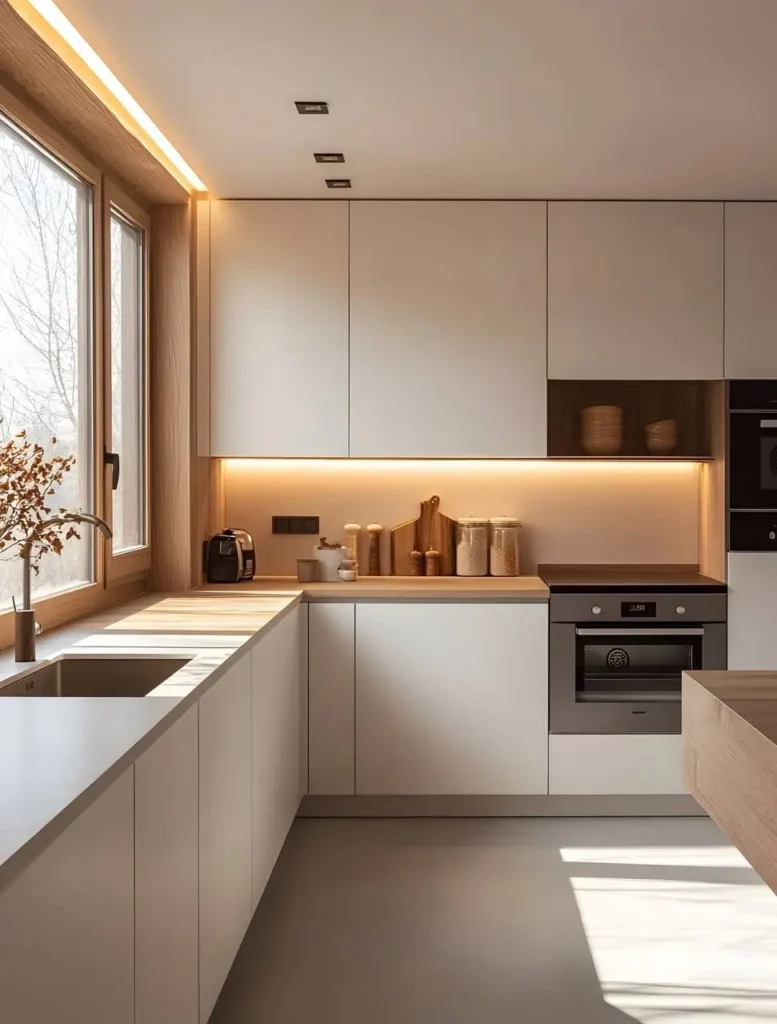
Subtle sophistication can be added by matte black and brushed brass hardware. Choose simple, clean lined handles or even integrates pulls.
Conclusion:
The organic modern kitchen offers a beautiful blend of contemporary style and natural warmth. It’s a design approach that prioritizes functionality, sustainability, and a connection to the outdoors. By incorporating natural materials, a neutral color palette, clean lines, and abundant light, you can create a kitchen that feels both sophisticated and serene. Remember to balance form and function, choose eco-friendly options when possible, and infuse your space with personal touches that reflect your unique style. Ultimately, an organic modern kitchen is more than just a place to cook; it’s a sanctuary for nourishment, connection, and a celebration of simple, natural beauty. It will create a timeless space.
FAQs about Organic Modern Kitchens
What is an organic modern kitchen?
An organic modern kitchen combines the clean lines and minimalist aesthetic of modern design with the warmth and textures of natural materials. It emphasizes sustainability, natural light, and a connection to the outdoors, creating a space that feels both contemporary and inviting.
What are the key elements of organic modern kitchen design?
Key elements include: natural materials (wood, stone, concrete), a neutral color palette (whites, creams, beiges, grays), clean lines and minimalist silhouettes, abundant natural light, and an emphasis on texture (mixing smooth and rough, matte and glossy).
What are the best materials for an organic modern kitchen?
Popular choices include: reclaimed wood, butcher block, quartz, concrete, natural stone (like marble or granite), and large-format tiles. Consider sustainable and eco-friendly options whenever possible.
How can I incorporate natural light into my kitchen?
Maximize existing windows, consider adding skylights or larger windows, use light-colored cabinetry and countertops to reflect light, and incorporate reflective surfaces like mirrors or glossy tiles.
What colors are best for an organic modern kitchen?
A neutral color palette is foundational. Think warm whites, creams, beiges, soft grays, and taupes. Accents can include muted greens, blues, terracottas, or other earthy tones inspired by nature.
How can I add texture to my organic modern kitchen?
Combine different materials with varying textures. Pair a smooth countertop with a textured backsplash, incorporate woven baskets, use wooden cutting boards and bowls, and add linen towels or curtains.
What type of cabinetry works best in an organic modern kitchen?
Flat-panel or slab doors with minimal ornamentation are ideal. Natural wood finishes or neutral-colored painted cabinets are popular choices. Integrated handles or simple, understated hardware complement the look.
How can I make my organic modern kitchen sustainable?
Choose eco-friendly materials (like reclaimed wood or bamboo), install energy-efficient appliances, use water-saving fixtures, and consider composting and recycling options.
How do I keep an organic modern kitchen from feeling too sterile?
Incorporate plenty of texture, add greenery with plants, use warm lighting, and include personal touches like artwork, handcrafted ceramics, or collected items that reflect your style.
Can I achieve an organic modern look on a budget?
Yes! Focus on incorporating natural elements through affordable options like plants, wooden accessories, and DIY projects. Consider painting existing cabinets, using budget-friendly countertop materials like butcher block, and maximizing natural light.
RELATED:

